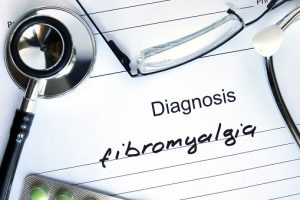
Both disorders are debilitating and can negatively affect a person’s quality of life. Furthermore, both conditions can result in chronic pain. And yet, despite their shared similarities, they are two unique conditions with different symptoms, diagnostic processes, and treatment methods.
Fibromyalgia vs. multiple sclerosis: prevalence
Fibromyalgia affects roughly six million Americans and multiple sclerosis affects roughly 400,000. Women are most commonly affected by both fibromyalgia and multiple sclerosis, compared to men. Furthermore, both conditions are commonly diagnosed in individuals in their 20s to 50s.
Similarities between fibromyalgia and multiple sclerosis symptoms
Fibromyalgia and multiple sclerosis share many overlapping symptoms and health conditions, including depression, anxiety, headache, irritable bowel syndrome, chronic fatigue syndrome, systemic lupus erythematosus, rheumatoid arthritis, and pain.
Due to this overlap, the two conditions may be confused with one another during the initial diagnostic process until further testing is completed to confirm the diagnosis.
Fibromyalgia vs. multiple sclerosis: signs and symptoms
Now that we know which signs and symptoms are the same, let’s examine each condition’s own unique symptoms.
Fibromyalgia symptoms include: memory issues known as fibro fog, changes in mood like depression and mood swings, and chronic fatigue. Many patients also experience sleep disorders and sleep-related problems.
Multiple sclerosis symptoms include: difficulty walking, slurred speech, and vision problems such as eye pain.
Fibromyalgia generally causes muscular pain, and patients often have tender points, which are areas that are most sensitive to pain and are common among patients. In order for a doctor to confirm a fibromyalgia diagnosis, they must be able to not only find any other underlying causes for the patient’s symptoms, but also run all possible tests to rule out other causes.
Fibromyalgia vs. multiple sclerosis: diagnosis
Diagnosis of both fibromyalgia and multiple sclerosis is done by ruling out all other causes for symptoms. As mentioned, fibromyalgia is diagnosed when all other conditions are ruled out. Furthermore, patients would have to have experienced muscular pain for at least three months for fibromyalgia to be considered. Tender points are also used in the process of fibromyalgia diagnosis along with analyzing the symptoms.
Multiple sclerosis diagnosis occurs with a multitude of testing including a spinal tap and MRI scans. Your doctor may also perform other tests, including blood work, to rule out other conditions. The MRI scan looks for lesions on the brain and spinal cord, as these are signs of multiple sclerosis.
Fibromyalgia vs. multiple sclerosis: treatment
There is no cure for either fibromyalgia or multiple sclerosis, so once a diagnosis is confirmed, your doctor will offer treatment methods in order to help minimize symptoms. Fibromyalgia may be treated with over-the-counter painkillers, prescription medications like antidepressants, alternative remedies such as acupuncture, massage, and yoga, and even lifestyle changes including improving sleep schedule, exercising regularly, limiting caffeine intake, and reducing stress.
Multiple sclerosis treatment can include over-the-counter pain medications, prescription medications, physical therapy, speech therapy, acupuncture, stress management, cognitive behavior therapy, and lifestyle changes such as increasing fiber intake, eating a low-fat diet, exercising regularly, and stretching.
Either condition is not life-threatening, but both are life-altering. Adjustments would need to be made in order to live with either multiple sclerosis or fibromyalgia. Although it may be stressful, working closely with your doctor and reaching out to the loved ones can help ease stress and improve treatment.
Related Reading:
Fibromyalgia disability status is linked to severe symptoms, higher medication use, and physically demanding jobs. A study revealed that 30 percent of Canadians who suffer from fibromyalgia – a condition characterized by chronic pain – have a disability status. Continue reading…
Fibromyalgia risk in women is increased with poor sleep habits, but a new treatment uses potential drug targets for poor sleep to reduce the risk of fibromyalgia. The findings come from researchers in Norway who uncovered the association between fibromyalgia risk and poor sleep. The researchers found that the risk of fibromyalgia continued to rise with severity of poor sleep, and the association was strongest among middle-aged and older women. Continue reading…
Sources:
http://www.healthline.com/health/multiple-sclerosis/multiple-sclerosis-vs-fibromyalgia#Takeaway8
http://www.livestrong.com/article/215714-differences-between-fibromyalgia-ms/
http://ms.about.com/od/signssymptoms/a/Q-Can-People-Have-Fibromyalgia-And-Ms-At-The-Same-Time.htm
http://www.fibromyalgia-symptoms.org/similarities-fibromyalgia-multiple-sclerosis.html